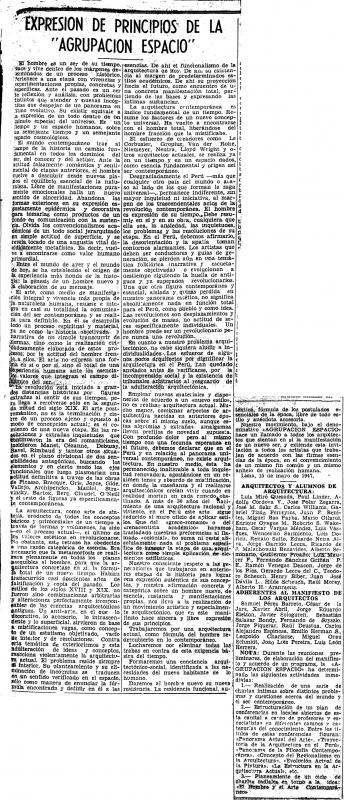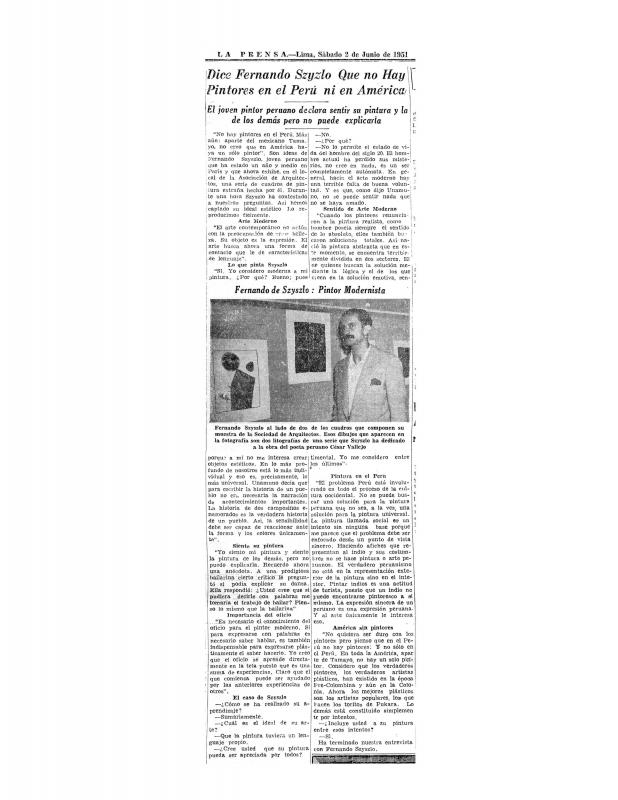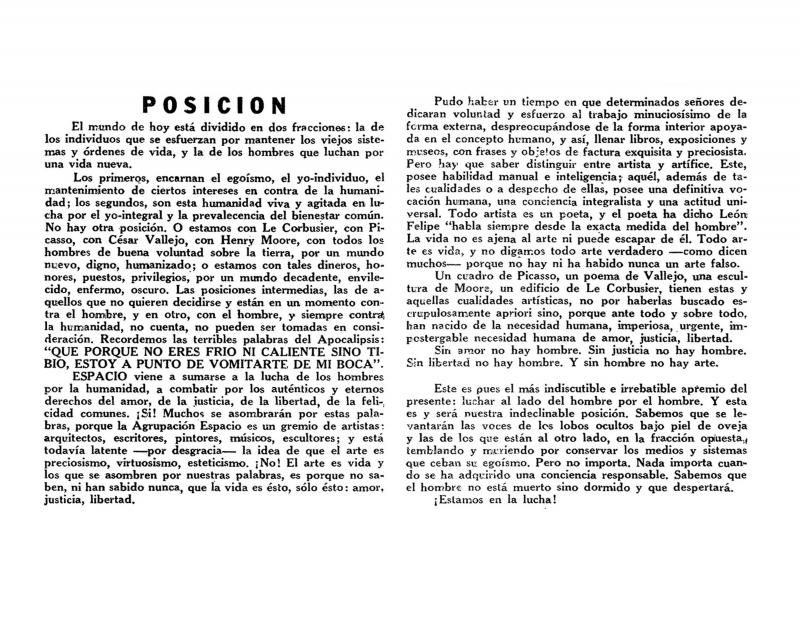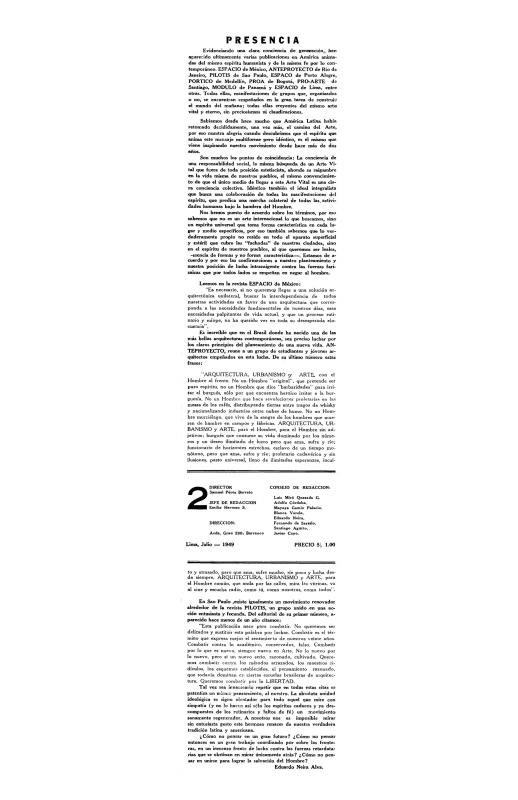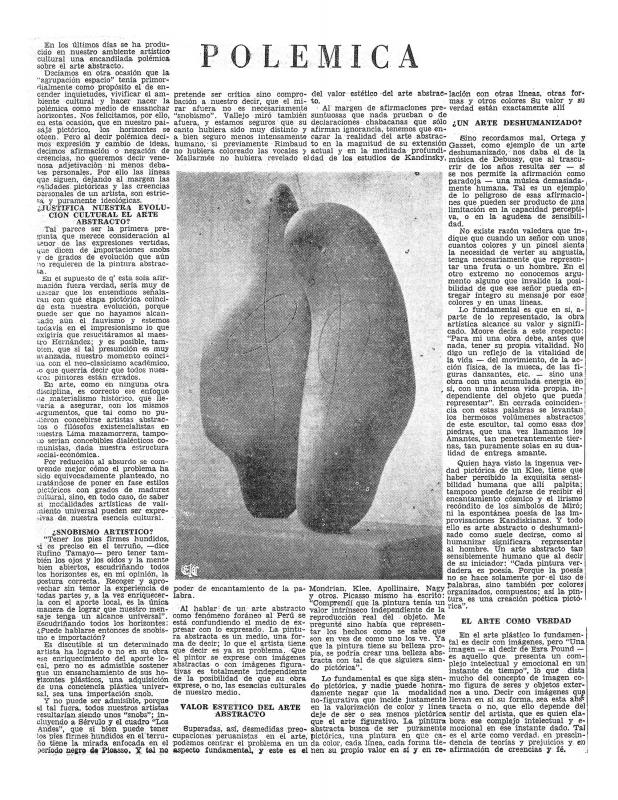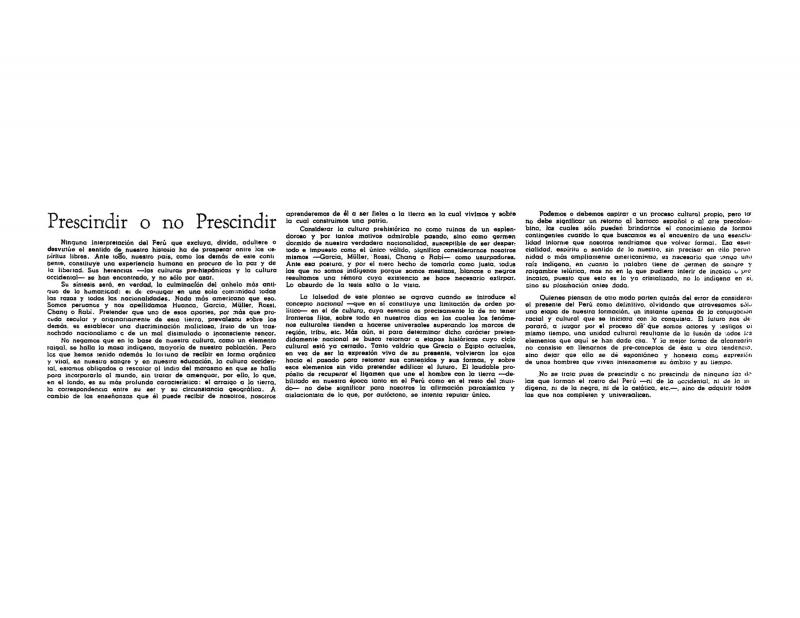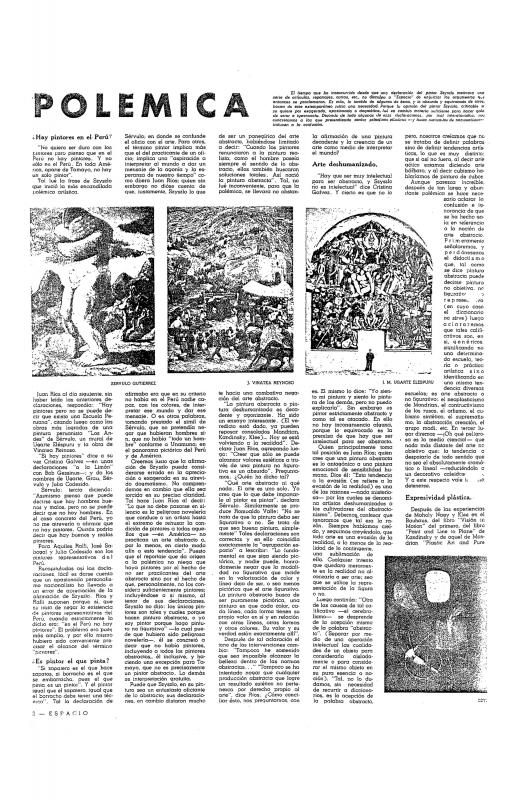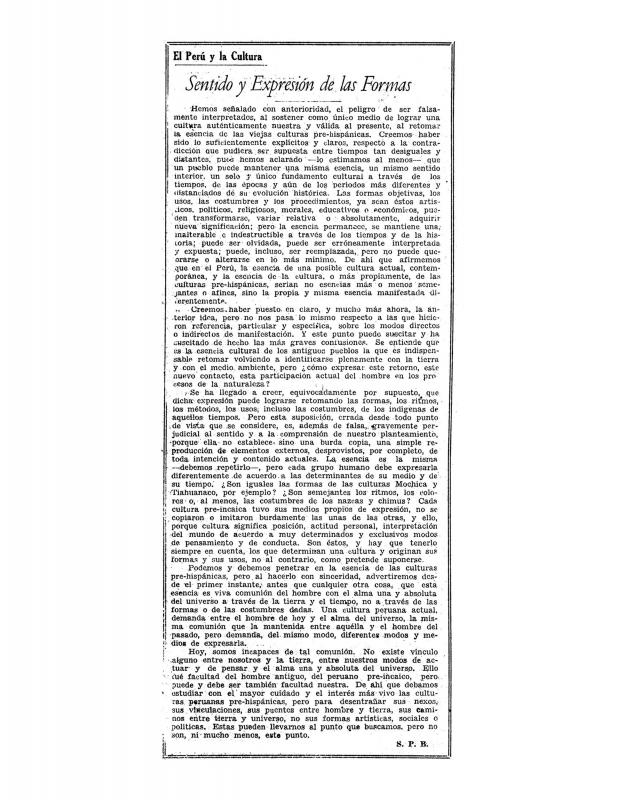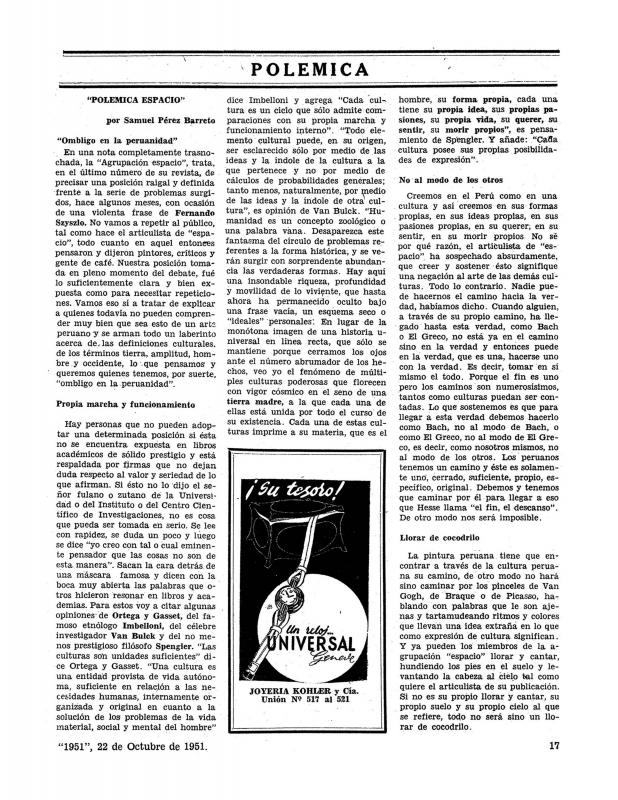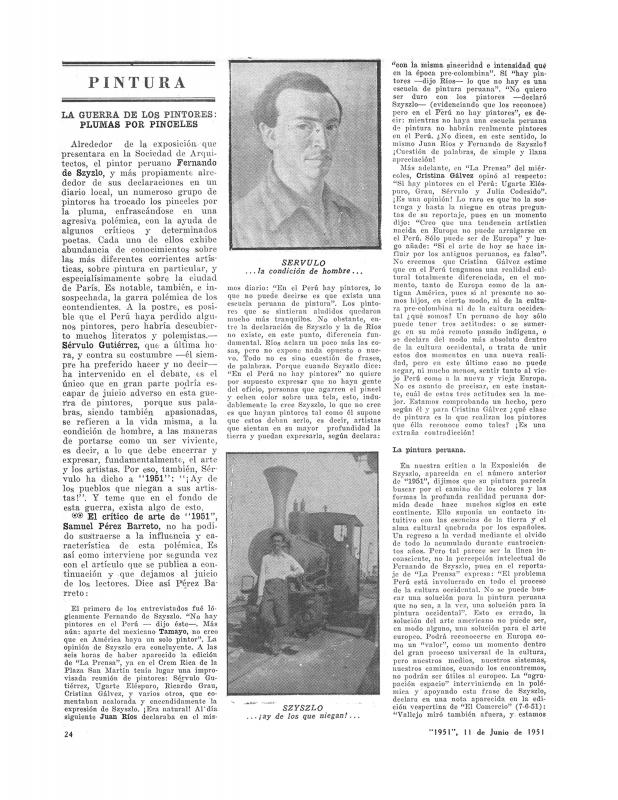Peruvian cultural journalist Samuel Pérez Barreto was one of the most eminent art critics active in the late forties. Like many intellectuals of his generation, he adhered to the Agrupación Espacio’s manifesto (1947), a founding document in Peruvian modern architecture and art. He was the editor of the first five issues of the journal Espacio (1949–50), that group’s platform, while also writing art criticism for the magazine Semanario Peruano. Pérez Barreto believed that it was possible to reconcile formal experimentation with a sense of historical continuity. Indeed, he maintained that the only way to create art both modern and Peruvian was by looking to the country’s earthly roots, the way pre-Columbian artists had. Well ahead of its time, Pérez Barreto’s view foretold the non-figurative veer in Peruvian painting in the sixties. Paradoxically, his position was attacked by fellow former members of Espacio during the major polemic on abstraction unleashed in May 1951 by the statements of painter Fernando de Szyszlo (b. 1925).
[For further reading, see in the ICAA digital archive the following texts on the Espacio group: “Expresión de principios de la Agrupación Espacio” (doc. no. 1126309), and (unsigned) “Dice Fernando Syszlo que no hay pintores en el Perú ni América: el joven pintor peruano declara sentir su pintura y la de los demás pero no puede explicarla” (doc. no. 1137793). The following texts were written by the Agrupación Espacio itself: “Posición” (doc. no. 1143745), “Presencia” (doc. no. 1150278), “Polémica” (doc. no. 1137823), “Prescindir o no prescindir” (doc. no. 1138933), and “Polémica: ¿hay pintores en el Perú?” (doc. no. 1139402). See as well the following texts also by Samuel Pérez Barreto: “El Perú y la cultura: Sentido y expresión de las formas” (doc. no. 1138491), “Polémica: ‘polémica Espacio’” (doc. no. 1137916), and “Pintura: la guerra de los pintores: plumas por pinceles” (doc. no. 1137839)].

